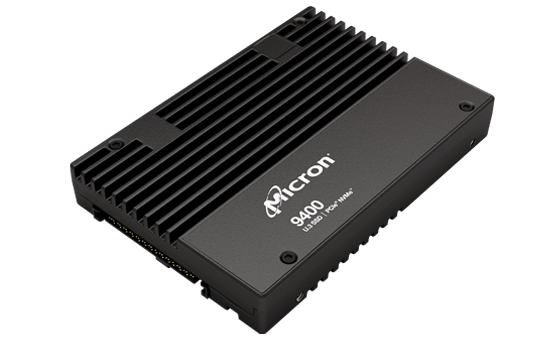Untangling terms: M.2, NVMe, USB-C, SAS, PCIe, U.2, U.3, OCuLink, E1.S, E1.L
Updated on Jan 15, 2024
I have been working in data recovery industry for 15 years now.And in this article I would like to explain some acronyms that sometimes confuse people. If you want to learn how these terms are used and how they relate to each other, this article is for you.
Take a look at the table with short descriptions of the most vague terms, I provide more details further down in this text.

M.2
M.2 is a physical interface and a popular form-factor for solid state drives (SSD). It was initially designed for compact devices.
Its most popular size is 2280 (which stands for 22 mm wide by 80 mm long).
Example: Samsung 850 EVO

There are 2 physical interface keys. You can meet one or both of them used on a M.2 SSD connector. Those are B and M keys which define the gap between pins.

M.2 SATA and PCIe
While M.2 is a form-factor, SATA and PCIe are two different communication interfaces used for M.2. They define protocols (languages) and speeds.
- M.2 SATA SSD reads/writes below 600 MB/s (SATA 3.0 specification defines the actual speed)
- M.2 PCIe 3.0 SSD can read/write as fast as 4000 MB/s (defined by PCIe 3.0 spec)
- M.2 PCIe 4.0 SSD can read/write as fast as 8000 MB/s (defined by PCIe 4.0 spec)
Speeds as mentioned above are just theoretical thresholds. It is always important to pay attention to the tech specs of each particular SSD.
Interesting fact
M.2 SSD cannot support both SATA and PCIe interfaces simultaneously. Though, some motherboards have hybrid slots supporting drives with both interfaces.
NVMe
This host controller and specification, from a certain point of time, has been developing with intentional SSD support. NVMe became the high-performance alternative to SATA/AHCI standard. Unlike M.2, it says nothing about the form-factor.
NVMe solid state drives use PCIe slot, which provides advantage of parallel PCIe lanes to maximize data transfer speed.
NVMe drives are becoming more and more trendy these days. Samsung, the leader in SSD market, switched their mass production to NVMe more than 5 years ago.
Example: NVMe Samsung 960 PRO

Interesting fact
NVMe protocol enables to run up to 65535 commands simultaneously. It is impossible with SATA or SCSI protocols.
SAS
SAS stands for Serial Attached SCSI. SAS is a physical interface designed for server use, whereas SCSI is a communication protocol.
SAS hard disk drives are often compared to SATA HDDs. In this context, I will say that SAS drives are usually faster than SATA drives. SAS drives show 10000/15000 RPM (revolutions per minute) versus 5400/7200 RPM of SATA drives. What’s more, SAS drives are more reliable and robust, as they are made of better components than similar SATA devices.
There are cons, though. SAS drives tend to be loud, so you don’t want to use them at home. SAS drive temperature is also higher, which may cause issues. And of course, SAS is more expensive than SATA.
To sum up, SAS drives are normally used in servers.
Example: SAS Seagate with 15000 RPM

Interesting fact
You can visually differentiate SAS device by joined power and data connectors. There is a gap in SATA interface connector, while there is none in SAS connector.

U.2
U.2 is a physical interface designed mainly for SSD NVMe drives that used in servers.
Visually, it resembles SAS connector. Technically, U.2 is SFF-8639 standard while SAS is SFF-8482 standard.

Being designed for server use, U.2 supports hot swap whereas M.2 does not. As for speed, up to 4 PCIe lanes enable to reach 4 GB/s performance. In theory. The practical example of quite popular U.2 SSD model is below.
Example: Intel 750 SSD U.2

Interesting fact
There are adapters for connection of U.2 drives to M.2 ports.
U.3
U.3 serves as an upgrade of U.2 introducing Tri-Mode interface. It makes use of the same SFF-8639 connector which provides a universal single bay concept to support SATA, SAS, and NVMe drives.
This is particularly useful in data centers where different types of storage drives are used for various purposes (like fast-access NVMe drives alongside high-capacity but slower SATA drives).

Example: Micron 9400 SSD U.3

Interesting fact
Compatibility between U.2 and U.3:
- U.3 drives are backward compatible with U.2 hosts
- U.2 drives are not compatible with U.3 hosts
E1.S vs E1.L
E1.S, or “Enterprise and Data Center SSD Form Factor 1U Short,” is a form factor used in enterprise and data center environments. Respectively, E1.L with its L stands for “long” drive. Such drives increase density, capacity, performance and cooling. E1.S and E1.L are positioned as the next SSD form factor that will replace U.2/U.3 in the data center.
Because drives are mounted on a server’s front, the E1.S form factor allows for easy drive swap.
Feature E1.S E1.L
Focus Performance & Compactness Capacity & Density
Length (mm) 111 - 131 318.75
Width (mm) 31 - 34 38.4
Thickness (mm) 5.9 - 25 9.5 - 18
Drives per 1U server Up to 32 (5.9mm/9.5mm) Up to 16 (18mm)
Capacity per drive Lower HigherExample: Micron 7400 E1.S SSD

Interesting fact
Visually, E1.S/L drives remind rulers. No wonder people started calling them “rulers” early on :)
USB-C
USB-C (which is short for USB Type-C) is a new hardware interface, which can provide:
- a reversible connector
- support of many communication protocols (Thunderbolt 3, HDMI, Display Port)
- power delivery at 20V (100W)
There is a rule of thumb due to the variety of protocols: one should always check what’s behind a specific USB-C port in a device.
These days external drives with USB-C interface grow more popular.
Example: WD My Passport

USB 3.1
USB 3.1 is not the same as USB Type-C. USB 3.1 (Gen 2) is a standard increasing performance to up to 1250 MB/s. USB 3.0 allows half the throughput.
USB 3.1 comes in two versions: Gen 1 and Gen 2.
- USB 3.1 Gen 1: Essentially the same as USB 3.0, offering speeds up to 5 Gbps.
- USB 3.1 Gen 2: Doubles the transfer speed to 10 Gbps, which is twice as fast as USB 3.1 Gen 1.
USB 3.2
USB 3.2 is also a version of the Universal Serial Bus standard. It differs from 3.1 mainly in terms of speed and data transfer capabilities. USB 3.2 further improves data transfer rates and also comes in different versions.
- USB 3.2 Gen 1x1: The same as USB 3.1 Gen 1 and USB 3.0, with speeds of 5 Gbps.
- USB 3.2 Gen 2x1: Equivalent to USB 3.1 Gen 2, offering 10 Gbps.
- USB 3.2 Gen 2x2: This version doubles the bandwidth using two lanes of 10 Gbps each, resulting in a total of 20 Gbps, which is the most significant enhancement in USB 3.2.
Interesting fact
USB-C with USB 3.1 Gen 2 support demands appropriate cable type.

OCuLink
OCuLink is a physical interface that stands for “Optical Copper (Cu) Link” and represents a cable version of PCI Express. OCuLink 2 (the last version) enables incredible performance up to 16 GT/s (8 GB/s total for ×4 PCIe lanes).

Another great feature is flexibility given OCuLink motherboard port can be used in different modes. For instance, you can connect an NVMe drive via OCuLink cable. Then change corresponding motherboard’s jumper, and the port becomes available for connection of 4 SATA drives via another OCuLink cable.


Interesting fact
Initially, they expected to bring OCuLink into laptops for connection of powerful external GPU boxes. It turned out to be a rare use. Instead, OCuLink became popular for PCIe interconnections in servers.
I hope I shed some light on drive-related questions arising once in a while. This article is worth bookmarking, as I tend to update it every year.
Feel free to ask a question or comment below.
Sincerely,
Vitaliy Mokosiy
